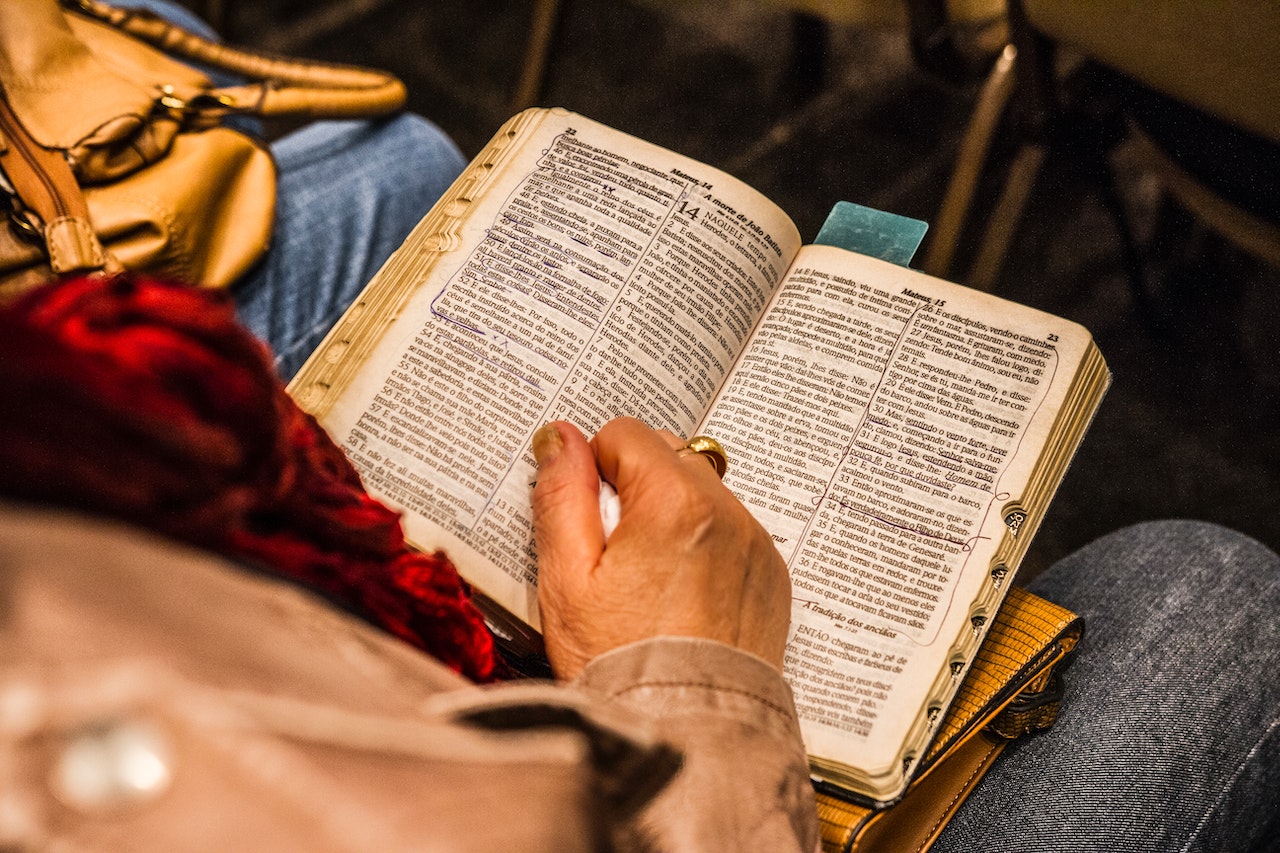Baptism and christening are two religious ceremonies that hold significance in Christianity. While they are often used interchangeably, there are subtle differences between the two. This article aims to provide a clear understanding of the distinction between baptism and christening.
Table of Contents
The Origins and Historical Significance of Baptism and Christening
Baptism and christening are two terms that are often used interchangeably, but they actually have different origins and historical significance. Understanding the difference between the two can help clarify their meanings and significance in religious traditions.
Baptism, in its most basic sense, is a religious ritual that involves the immersion or sprinkling of water on a person’s head or body. It is a significant event in many Christian denominations and is considered a sacrament in the Catholic Church. The origins of baptism can be traced back to the time of Jesus Christ, who was himself baptized by John the Baptist in the Jordan River.
The act of baptism symbolizes purification and the washing away of sins. It is seen as a way for individuals to publicly declare their faith and commitment to God. In many Christian traditions, baptism is performed on infants as a way to welcome them into the faith and initiate them into the church community. It is believed that through baptism, the individual becomes a member of the church and receives the grace of God.
On the other hand, christening is a term that is often used to refer to the naming ceremony of a child. It is a common practice in many Christian denominations, particularly in the Anglican Church. The term “christening” comes from the Greek word “christos,” which means “anointed one.” In this sense, christening is seen as a way to anoint the child with the Holy Spirit and officially give them a Christian name.
The origins of christening can be traced back to the early Christian church, where it was customary to give a child a Christian name and bless them with holy water. The act of christening is often accompanied by prayers, blessings, and the lighting of a baptismal candle. It is seen as a way to welcome the child into the Christian community and invoke God’s blessings upon them.
While baptism and christening have different origins and historical significance, they are both important rituals in the Christian faith. They both symbolize the initiation of an individual into the church and the bestowing of God’s grace upon them. Whether it is through immersion or sprinkling of water, or through the anointing with holy water, both baptism and christening serve as a way for individuals to publicly declare their faith and commitment to God.
In conclusion, the difference between baptism and christening lies in their origins and historical significance. Baptism is a religious ritual that involves the immersion or sprinkling of water and symbolizes purification and the washing away of sins. Christening, on the other hand, is a naming ceremony that involves the anointing of a child with holy water and the giving of a Christian name. Both rituals are important in the Christian faith and serve as a way for individuals to publicly declare their faith and commitment to God.
Understanding the Symbolism and Rituals of Baptism and Christening

Baptism and christening are two terms that are often used interchangeably, but they actually have different meanings and origins. Understanding the symbolism and rituals behind these two practices can help shed light on their differences.
Baptism is a religious ceremony that is practiced in various Christian denominations. It is considered a sacrament, which means it is a sacred ritual that is believed to convey divine grace. The act of baptism involves immersing a person in water or pouring water over their head, symbolizing purification and rebirth. It is seen as a way to cleanse the individual of their sins and initiate them into the Christian faith.
Christening, on the other hand, is a term that is commonly used in the Anglican Church. It is a specific type of baptism that is performed on infants. The word “christening” comes from the Old English word “crīstnung,” which means “to make Christian.” During a christening, the baby is given a Christian name and welcomed into the church community. The parents and godparents make promises on behalf of the child, pledging to raise them in the Christian faith.
While baptism and christening share similar themes of purification and initiation, the main difference lies in the timing and the participants involved. Baptism can be performed on individuals of any age who have made a conscious decision to embrace Christianity. It is seen as a personal choice and a public declaration of faith. Christening, on the other hand, is typically performed on infants who are too young to make their own decisions. It is a way for parents to dedicate their child to God and seek the support of the church community in raising them in the faith.
Another difference between baptism and christening is the cultural and regional variations in the rituals. In some Christian traditions, baptism involves full immersion in water, symbolizing a complete cleansing of sins. In other traditions, water is poured over the head three times, representing the Holy Trinity. Christening, on the other hand, often involves the sprinkling of water on the baby’s forehead, symbolizing the washing away of original sin.
It is important to note that the significance and practices of baptism and christening can vary among different Christian denominations. Some churches may use the terms interchangeably, while others may have specific rituals and beliefs associated with each term. Ultimately, the purpose of both baptism and christening is to welcome individuals into the Christian faith and symbolize their commitment to living a life guided by Christian principles.
In conclusion, while baptism and christening are often used interchangeably, they have distinct meanings and rituals. Baptism is a sacrament that symbolizes purification and rebirth, while christening is a specific type of baptism performed on infants. The main difference lies in the timing and participants involved, with baptism being a personal choice and christening being a dedication made by parents on behalf of their child. Understanding these differences can help deepen our appreciation for the symbolism and rituals of these important religious practices.
Exploring the Religious and Cultural Variations of Baptism and Christening
Baptism and christening are two terms that are often used interchangeably, but they actually have different meanings and origins. While both involve the act of welcoming a person into a religious community, they are practiced differently in various religious and cultural traditions.
Baptism is a religious ritual that is practiced in Christianity, specifically in the Catholic, Protestant, and Orthodox denominations. It is considered a sacrament and is seen as a way to cleanse a person of their sins and initiate them into the Christian faith. The word “baptism” comes from the Greek word “baptizein,” which means to immerse or wash. In this ritual, the person being baptized is fully immersed in water or has water poured over them, symbolizing their spiritual rebirth and commitment to following the teachings of Jesus Christ.
On the other hand, christening is a term that is commonly used in the Anglican Church and other Protestant denominations. It is a naming ceremony that is performed on infants or young children, usually within a few months of their birth. The word “christening” comes from the Old English word “crīstnung,” which means to make someone a Christian. During a christening, the child is given a Christian name and is welcomed into the Christian community. Water is also used in this ceremony, but it is usually sprinkled or poured over the child’s head rather than full immersion.
The differences between baptism and christening can also be seen in the cultural variations of these rituals. In some cultures, baptism is seen as a significant event that is celebrated with great pomp and ceremony. It may involve the entire community coming together to witness the baptism and offer their blessings to the person being baptized. In other cultures, baptism is a more private affair, with only close family and friends present.
Christening, on the other hand, is often seen as a more intimate and personal event. It is usually held in a church and attended by immediate family members and close friends. The focus is on the child and their entry into the Christian faith, rather than on the larger community.
While the terms baptism and christening have different meanings and practices, they both hold great significance in the religious and cultural traditions in which they are practiced. They are both seen as important milestones in a person’s spiritual journey and serve as a way to publicly declare their commitment to their faith.
In conclusion, baptism and christening are two distinct rituals that are practiced in various religious and cultural traditions. Baptism is a sacrament in Christianity that involves full immersion or pouring of water to symbolize spiritual rebirth, while christening is a naming ceremony that welcomes infants or young children into the Christian community. The differences between these rituals can also be seen in the cultural variations and the level of ceremony involved. Regardless of the terminology or practice used, both baptism and christening hold deep meaning and serve as important milestones in a person’s religious journey.
The Role of Baptism and Christening in Different Christian Denominations
Baptism and christening are two terms that are often used interchangeably, but they actually have different meanings in different Christian denominations. Understanding the role of baptism and christening in various Christian traditions can help shed light on the differences between the two.
In many Christian denominations, baptism is seen as a sacrament that marks the initiation into the Christian faith. It is a symbolic act that represents the washing away of sins and the rebirth into a new life in Christ. Baptism is typically performed by immersing the person in water or by pouring water over their head, while a minister or priest recites prayers and blessings.
On the other hand, christening is a term that is commonly used in the Anglican Church and other Protestant denominations. It refers to the act of naming a child and welcoming them into the Christian community. Christening often involves the sprinkling of water on the child’s forehead, while the minister or priest recites prayers and blessings. It is seen as a way of dedicating the child to God and asking for his guidance and protection throughout their life.
While baptism and christening have different names and rituals, they both serve a similar purpose in different Christian denominations. They are both seen as important milestones in a person’s spiritual journey and are often accompanied by celebrations and gatherings of family and friends.
In the Catholic Church, baptism is considered a sacrament of initiation, along with confirmation and the Eucharist. It is seen as the first step in becoming a full member of the Church. In Catholicism, baptism is typically performed on infants, although adults can also be baptized if they have not been previously baptized. The Catholic Church believes that baptism removes the original sin inherited from Adam and Eve and brings the person into a state of grace.
In contrast, many Protestant denominations view baptism as a symbolic act rather than a sacrament. They believe that baptism is an outward expression of an inward faith and a public declaration of one’s commitment to follow Jesus. In these denominations, baptism is often performed on individuals who have made a personal decision to accept Jesus as their Lord and Savior.
It is important to note that the significance and practices of baptism and christening can vary even within the same denomination. Different churches may have different traditions and interpretations of these rituals. Some may require baptism or christening for membership, while others may view them as optional or symbolic acts.
In conclusion, while baptism and christening are often used interchangeably, they have different meanings in different Christian denominations. Baptism is seen as a sacrament that marks the initiation into the Christian faith, while christening is a term used in the Anglican Church and other Protestant denominations to refer to the act of naming a child and welcoming them into the Christian community. Both rituals serve as important milestones in a person’s spiritual journey and are accompanied by prayers, blessings, and celebrations. The significance and practices of baptism and christening can vary within and between denominations, reflecting the diversity of Christian beliefs and traditions.
Conclusion
In conclusion, the difference between baptism and christening lies in their cultural and religious contexts. Baptism is a religious sacrament practiced in various Christian denominations, symbolizing the initiation into the Christian faith and the forgiveness of sins. Christening, on the other hand, is a term commonly used in some Christian traditions to refer to the act of naming and dedicating a child to God, often accompanied by baptism. While the terms are sometimes used interchangeably, their specific meanings can vary depending on the religious and cultural practices of different Christian communities.
For licensing reasons, we must provide the following notice: This content was created in part with the help of an AI.


